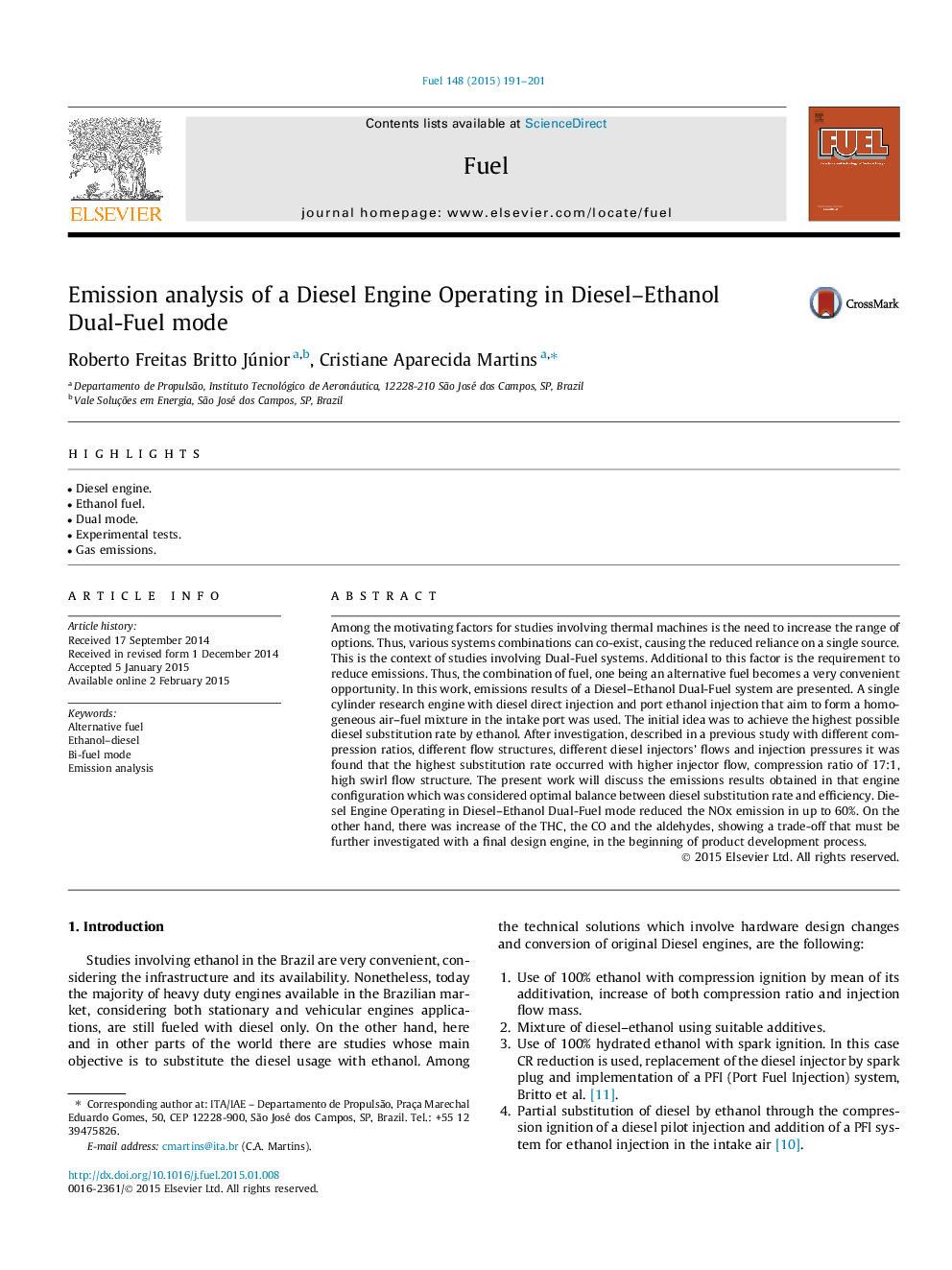| Article ID | Journal | Published Year | Pages | File Type |
|---|---|---|---|---|
| 205927 | Fuel | 2015 | 11 Pages |
•Diesel engine.•Ethanol fuel.•Dual mode.•Experimental tests.•Gas emissions.
Among the motivating factors for studies involving thermal machines is the need to increase the range of options. Thus, various systems combinations can co-exist, causing the reduced reliance on a single source. This is the context of studies involving Dual-Fuel systems. Additional to this factor is the requirement to reduce emissions. Thus, the combination of fuel, one being an alternative fuel becomes a very convenient opportunity. In this work, emissions results of a Diesel–Ethanol Dual-Fuel system are presented. A single cylinder research engine with diesel direct injection and port ethanol injection that aim to form a homogeneous air–fuel mixture in the intake port was used. The initial idea was to achieve the highest possible diesel substitution rate by ethanol. After investigation, described in a previous study with different compression ratios, different flow structures, different diesel injectors’ flows and injection pressures it was found that the highest substitution rate occurred with higher injector flow, compression ratio of 17:1, high swirl flow structure. The present work will discuss the emissions results obtained in that engine configuration which was considered optimal balance between diesel substitution rate and efficiency. Diesel Engine Operating in Diesel–Ethanol Dual-Fuel mode reduced the NOx emission in up to 60%. On the other hand, there was increase of the THC, the CO and the aldehydes, showing a trade-off that must be further investigated with a final design engine, in the beginning of product development process.
